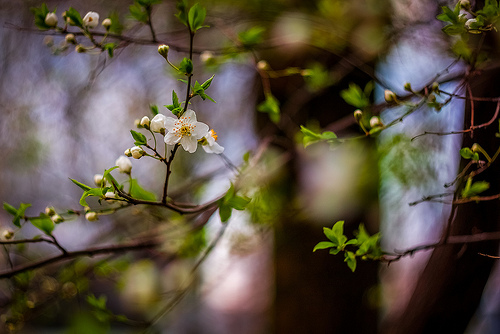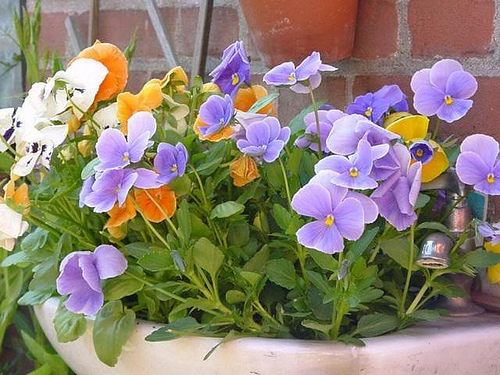Old Man Winter has finally moved along, and it’s time for spring gardening in many parts of the world. This is a busy time of year in the gardening calendar. If you’re not sure where to start, follow these spring gardening tips to ensure your garden gets off to a great start just in time for growing season.

Photo via Cath in Dorset/Flickr Creative Commons
Clean garden
- Spring is not only a good time to clean the house — it’s an excellent season to clean your garden beds and remove any dead leaves or winter dieback on plants. Throw these materials in the compost pile.
- Don’t forget to remove old weeds, taking out their roots to discourage their re-growth. It’s typically a good idea to toss weeds and diseased plant parts in the trash, not the compost pile.
- Clean and sharpen your garden tools now, so they are ready for use. If you’re feeling energetic, organize your tool shed so it will be easier to find the things you need readily during gardening season.
Feed the soil
- Amend your soil with a couple inches of organic materials, such as compost, well-aged manure or worm castings. Organic matter is very important to healthy soil, which leads to healthy gardens. Consider buying soil amendments in bulk to save money, and share with neighbors.
- Get a soil test to see exactly what nutrients your soil needs. Many cooperative extension services around the nation provide local residents with soil tests for free or a reasonable rate.
- Feed your garden beds with well-balanced fertilizers around this time, following the directions carefully.
Prune your plants
- One main reason for pruning plants in spring is to stimulate growth. That’s why you don’t want to prune your plants too early in the season, in case of an unexpected frost.
- Spring blooming plants are generally pruned shortly after they bloom so you don’t remove any future flowers.
- Summer blooming plants are typically pruned earlier in spring to stimulate their growth.
- For roses, many temperate climates follow the guidelines of pruning roses when the forsythia blooms.
Photo via Herels Tom/Flickr Creative Commons
Start planting
- Grow cool-season vegetables such as lettuces, arugula, peas and cabbages in the garden beds.
- Plant pansies, violas, sweet peas and snapdragons, which thrive at this time of year.
- Start tomatoes or peppers from seeds indoors about 6 to 8 weeks before the last frost date in your area. Then gradually allow seedlings to acclimate to outdoor conditions before planting them in the garden in late-spring.
Divide perennials
- Divide perennials before spring growth for best results.
- Share extra plant cuttings with family members, friends and neighbors.
Start journal
- Keep track of what you plant, or want to plant, this year in a garden journal. This will help you with crop rotation in the vegetable bed, among other things.
- Record the progress of your garden throughout the growing season to see which plants and varieties performed best for you.

Photo via Sorin Mutu/Flickr Creative Commons
Mulch
- Save yourself time and headaches now by mulching your garden beds with several inches of mulch. This will reduce weeds, mitigate diseases, save water and keep soil temperatures constant.
- Water soil well before applying mulch, and then again afterward.
- Keep mulch a few inches from the plant stems to prevent root rot.
Following these spring gardening tips will help ensure your growing season gets off to a great start.


Share tips, start a discussion or ask one of our experts or other students a question.
No Responses to “20 Essential Spring Gardening Tips”